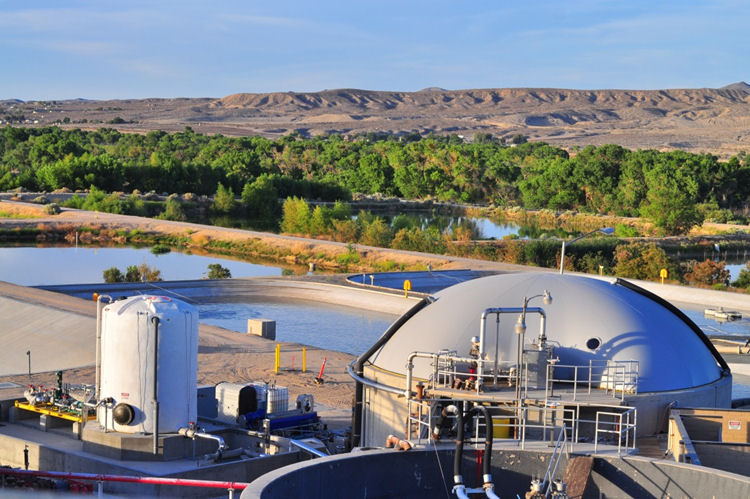
Victor Valley Wastewater Reclamation Authority (Victorville, Calif.) will host a ribbon-cutting ceremony celebrating the Omnivore™ system, which will help the authority become 90% to 100% energy neutral by 2015. Photo courtesy of Anaergia Inc. (Burlington, Ontario, Canada).
In 2008, the Victor Valley Wastewater Reclamation Authority (VVWRA; Victorville, Calif.) set two goals: offset operation and maintenance expenses and increase revenue. After reviewing its entire facility, VVWRA came up with an idea of repurposing its anaerobic digesters to produce energy and developed a holistic energy-management plan. These strategies set VVWRA on a path to reaching beyond its initial goals to achieve energy neutrality.
“Since then, VVWRA has accomplished a specific task on its goal toward energy neutrality each year,” said Meganne M. Harvey, project engineer with Anaergia Inc. (Burlington, Ontario, Canada).
On Sept. 26, the VVWRA will host a ribbon-cutting ceremony celebrating the Omnivore™ system, which will help the authority become 90% to 100% energy neutral by 2015.
In partnership with Anaergia Inc. and an Innovative Technology Grant from the California Energy Commission, VVWRA created this system by retrofitting an out-of-commission 1136-m3 (300,000-gal) concrete anaerobic digester. It replaced the digester’s floating cover and mixing system with a dual-membrane gas holder and high-solids hydraulic mixing system. It also installed a receiving and storage system that enables the Ominvore to accept high-strength external waste for codigestion as well as a proprietary recuperative-thickening system to increase solids capacity by decoupling the solids retention time and hydraulic retention time.
“This process allows gas-producing materials to remain in the digester for longer periods and in greater quantities than in conventional digestion,” Harvey said. “These modifications will result in tripling digester capacity and performance along with power for the steam generator that’s in use for the rest of the plant.”
The Omnivore system will use biogas to produce energy by codigesting both solids and food waste. Several high-strength waste-streams — such as fats, oils, and grease (FOG); restaurant wastes; and dairy/food processing wastes — are being evaluated for potential introduction into the digester. Currently, VVWRA staff is testing the equipment and control systems as well as developing a new business plan for FOG and food-waste processing. Staff are making arrangements with local waste generators and transporters and plans to finalize these plans soon, Harvey said.
“The community has responded with overwhelming support, and VVWRA is being contacted regularly to accept new sources of organic waste from the community,” Harvey said.
The Ominvore system will begin operating in September, and VVWRA will feed the system with 133 m3 (35,000 gal) of high-strength waste each week. This amount will be adjusted as necessary as the project progresses, Harvey explained.
Before the retrofit, the digester typically produced 1133–1416 m3/d (40,000–50,000 ft3/d) of biogas. Once the system has stabilized, VVWRA expects the biogas yield to be about 3682 m3/d (130,000 ft3/d). And the maintenance requirements for the system are similar to those of a traditional anaerobic digester, only with service boxes that allow in situ maintenance of the digester-mixing system without process interruptions, Harvey said.
“It is a highly cost-effective method of increasing digester capacity without needing to invest in new infrastructure,” Harvey said. “The increased capacity and output of the Omnivore results in significantly higher biogas production and solids handling within the same footprint,” she said.
The project has exceeded VVWRA’s expectations, leading the utility to recommend similar strategies for other facilities. “[The project] repurposes underutilized infrastructure in a manner that now reduces expenses, generates revenue, and creates a renewable, zero-carbon fuel source,” Harvey said. “If a utility the size of VVWRA can do this, so can any other facility.”
Anyone interested can participate in the ribbon-cutting ceremony, Sept. 26 at 9 a.m., by contacting Kate Beyer at kbeyer@vvwra.com or 760-523-1781.
— Jennifer Fulcher, WEF Highlights








August 27, 2014
Featured